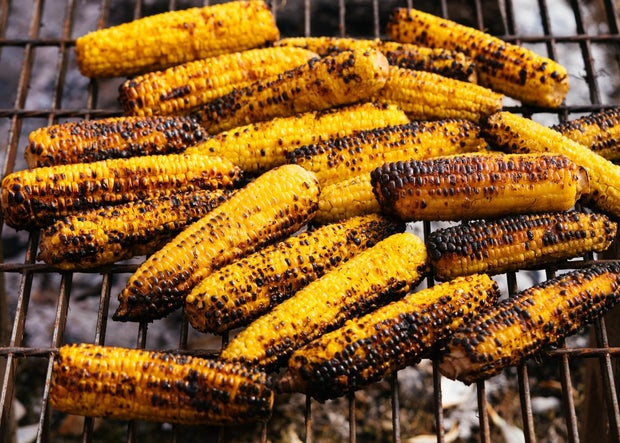CBS News
New details emerge after series of resignations rock Miss USA organization

Watch CBS News
Be the first to know
Get browser notifications for breaking news, live events, and exclusive reporting.
CBS News
Missing hiker found alive after surviving more than 6 weeks in remote Canada wilderness

A hiker was found alive this week in the remote wilderness of northwestern Canada, where he had been lost for more than six weeks, authorities said.
Sam Benastick was initially reported missing on Oct. 19 after failing to return from a backcountry trip in Redfern-Kiely Provincial Park, an isolated landscape known for its alpine tundra and stark mountainscape in the northern Rockies of British Columbia. Two men spotted Benastick Tuesday on their way to the park’s Redfern Lake trail for work, according to the Royal Canadian Mounted Police. Recognizing him as the missing hiker, they took Benastick to a hospital.
Benastick told police he had stayed in his car for a couple of days at the start of his backcountry trip, before walking to a mountainside creek and camping there for 10 or 15 days, the RCMP said. At that point, the hiker said he moved to a different location farther down into the valley and a built a camp and shelter in a dried-out creek bed. Eventually, Benastick found his way to the road where he encountered the Redfern Lake trail employees, well over six weeks after he first set out on his journey.
“Finding Sam alive is the absolute best outcome. After all the time he was missing, it was feared that this was would not be the outcome,” said Corporal Madonna Saunderson, a spokesperson for the RCMP in British Columbia, in a statement.
Benastick, 20, survived extraordinarily harsh conditions. When he was found, the hiker was using two walking sticks to support himself and had cut his sleeping back to wrap the fabric around his legs for warmth, the Canadian broadcaster CBC News reported. Temperatures in the park were frigid while he was missing, at times dropping to -20 degrees Celsius, or -4 degrees Fahrenheit, according to BBC News, a CBS News partner.
“Those are very difficult conditions for really anyone to survive in, especially [with] limited supplies and equipment and food,” Prince George Search and Rescue search manager Adam Hawkins told the BBC.
Mike Reid, the general manager of the inn near Redfern-Kiely Provincial Park where Benastick’s family stayed as search efforts got underway in October, told CBC News that Benastick was in “rough shape” Tuesday. But he is expected to recover.
Authorities initiated a massive search for Benastick when the missing person report for him was filed, but that search was called off at the end of October, BBC News reported. Police said they intend to gather more information about what happened to the hiker and why he remained missing for so long once Benastick’s health has improved.
CBS News
The foods chefs urge people to try during Native American Heritage Month (and beyond)

The United States is known as a great melting of people, food and culture. In major cities across the country like New York, Chicago and Los Angeles, people can find nearly any cuisine that fits their heart’s desire.
However, as Chef Sean Sherman of the Oglala Lakota Tribe has pointed out in the past, these cities have few – if any – restaurants focused on Indigenous cuisines from the more than 570 recognized American Indian tribes and Alaska Native entities. Each of these tribes has their own distinct food traditions.
KENA BETANCUR/AFP via Getty Images
Eateries like Watecha Bowl, Tocabe: An American Indian Eatery, and Owamni aim to change that by reviving or paying homage to the centuries-old techniques and flavors passed down through generations.
“We all are on the same mission of food sovereignty,” Watecha Bowl owner and entrepreneur Lawrence West told CBS News. “And introducing the world to Native American food.”
West is a member of the Cheyenne River Sioux Tribe.
“The things that I cook and the way that I prepare food is very important because it only represents a certain heritage of people,” he said.
Restaurant options around the country
West’s restaurant Watecha Bowl is a fast-food eatery in Sioux Falls, South Dakota that serves food and flavors from the Lakota Nation.
“I’ve had the privilege of feeding people from all over the world,” West said. “I’ve fed people from all 50 states.”
One of the things his restaurant is doing this year giving out an Indian taco in exchange for a toy that will be donated to local Native American kids in foster care, according to the Facebook page with 30,000 followers.
Tocabe: An American Indian Eatery is a fast-casual restaurant that serves build-your-own Native American food in Denver, Colorado. Its goal is to “rebuild the original American food system.”
Co-founder and President Ben Jacobs, told CBS News that he wants to make his cuisine accessible to everyone while offering a space for Native community members to feel at home. He is a tribal member of the Osage Nation of northeast Oklahoma.
Tacobe
He said he was inspired to open the eatery because Native food did not seem to have a place in the culinary industry in 2008 when it opened. More than 16 years later, Tocabe’s food still shares stories of community, culture and identity.
In Minneapolis, Minnesota, Chef Sean Sherman’s restaurant Owammni aims to “decolonize” the dining experience by purchasing ingredients from Indigenous food producers that would have been found in North America before European colonization.
“It’s unfortunate that this restaurant is unique. Part of the goal is, how do we normalize something that’s healthy and Indigenous? We’re showing a model that’s possible,” Sherman wrote in a recent blog post on the restaurant’s website.
What are the essential dishes to try?
According to West, wojapi is a must-have. The thick berry sauce is one of the most traditional foods of the American plains. It can be used as a dip, on frybread, meat or even as is.
Next is bison, particularly chislic, invented in South Dakota. Third is wild rice with maple syrup.
Frybread is one of the most popular Native American foods. But West said this was embraced out of necessity when the U.S. government forced assimilation with stipends during the land grab and the Trail of Tears.
Jacobs emphasizes, though, that ingredients found in local grocery stores like corn, beans, squash, tomatoes, potatoes, peppers and chillies originate “right here” in America. Those are Native foods, too. He said he hopes all Americans should understand where our food comes from and appreciate the story behind it.
The Tacobe Indigenous Marketplace offers common, or not-so-common, ingredients, but they are sourced from Native producers on tribal lands.
Tacobe
A history of food
Native American food is not mainstream for a variety of reasons.
Sherman pointed to the idea of “manifest destiny,” or the 19th-century belief that the U.S. was “destined” by God to expand across North America to spread democracy and capitalism.
West and Sherman also pointed to “forced assimilation,” or the U.S. government’s aim to make Native people adopt the customs, values and behaviors of the dominant culture. Laws like The Indian Removal Act of 1830, The Homestead Act of 1862, The Dawes Act of 1887 and others helped make this happen.
According to Britannica, The Trail of Tears refers to the forced relocation of Native people in the Southeastern U.S. during the 1830s. Tribal military records estimate that around 100,000 indigenous people were forcibly removed from their homes.
Policies like these disrupted Native food systems, leading to food insecurity and poor health outcomes, according to the Center on Budget and Policy Priorities (CBPP).
The CBPP said the U.S. has made treaties with tribes since the 1700s, promising to provide Indigenous people with rations, giving them food like lard, wheat and flour, which were often unhealthy.
According to the 2023 U.S. Census data, around 1.3% of Americans identify as American Indian or Native American.
Jacobs said after centuries of the American government deconstructing Native food systems, “we’re trying to rebuild.”
“I think we’re at a point now that we can control our food again, which means we can control our future,” he said.
CBS News
11/28: CBS Mornings Plus – CBS News

Watch CBS News
Be the first to know
Get browser notifications for breaking news, live events, and exclusive reporting.




